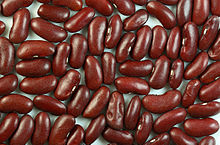Methods
There are very many methods of cooking, most of which have been known since antiquity. These include baking, roasting, frying, grilling, barbecuing, smoking, boiling, steaming and braising. A more recent innovation is microwaving. Various methods use differing levels of heat and moisture and vary in cooking time. The method chosen greatly affects the end result. Some foods are more appropriate to some methods than others. Some major hot cooking techniques include: A Sunday roast consisting of roast beef, roast potatoes, vegetables, and yorkshire pudding A Braised pot roast dish A diagram of a propane smoker used to prepare smoked foods. Roasting Roasting – Barbecuing – Grilling/Broiling – Rotisserie – Searing Baking Baking – Baking Blind- Flashbaking Boiling Boiling – Blanching – Braising – Coddling – Double steaming – Infusion – Poaching – Pressure cooking – Simmering – Smothering – Steaming – Steeping – Stewing – Vacuum flask cooking Frying Fry – Deep frying – Hot salt frying – Hot sand frying – Pan frying – Pressure frying – Sauteing – Stir frying Smoking Smoking

Roasting is a cooking method that uses dry heat, whether an open flame, oven, or other heat source. Roasting can enhance flavor through caramelization and Maillard browning on the surface of the food. Roasting uses indirect, diffused heat (as in an oven), and is suitable for slower cooking of meat in a larger, whole piece.[1] Meats and most root and bulb vegetables can be roasted. Any piece of meat, especially red meat, that has been cooked in this fashion is called a roast. In addition, large uncooked cuts of meat are referred to as roasts. A roast joint of meat can take one, two, even three hours to cook - the resulting meat is tender. Also, meats and vegetables prepared in this way are described as "roasted", e.g., roasted chicken or roasted squash. For roasting, the food may be placed on a rack, in a roasting pan or, to ensure even application of heat, may be rotated on a spit or rotisserie. If a pan is used, the juice can be retained for use in gravy, Yorkshire pudding, etc. During oven roasting, hot air circulates around the meat, cooking all sides evenly. There are several plans for roasting meat: low-temperature cooking, high-temperature cooking, and a combination of both. Each method can be suitable, depending on the food and the tastes of the people. A low-temperature oven, 95 °C to 160 °C (200 °F to 325 °F), is best when cooking with large cuts of meat, turkey and whole chickens.[2] This is not technically roasting temperature, but it is called slow-roasting. The benefit of slow-roasting an item is less moisture loss and a more tender product. More of the collagen that makes meat tough is dissolved in slow cooking. At true roasting temperatures, 200 °C (400 °F) or more, the water inside the muscle is lost at a high rate. Cooking at high temperatures is beneficial if the cut is tender enough—as in filet mignon or strip loin—to be finished cooking before the juices escape. A reason for high temperature roasting is to brown the outside of the food, similar to browning food in a pan before pot roasting or stewing it. Fast cooking gives more variety of flavor, because the outside is brown while the center is much less done. The combination method uses high heat just at either the beginning or the end of the cooking process, with most of the cooking at a low temperature. This method produces the golden-brown texture and crust, but maintains more of the moisture than simply cooking at a high temperature, although the product will not be as moist as low-temperature cooking the whole time. Searing and then turning down to low is also beneficial when a dark crust and caramelized flavor is desired for the finished product. Note that searing in no way "locks in" moisture: moisture loss is simply a function of heat and time.[citation needed] The outside is brown and the rest is done fairly uniformly. In general, in either case, the meat is removed from heat before it has finished cooking and left to sit for a few minutes, while the inside cooks further from the residual heat content, a phenomenon known as carry over cooking, also known as "resting" the meat. The objective in any case is to retain as much moisture as possible, while providing the texture and color. As meat cooks, the structure and especially the collagen breaks down, allowing juice to come out of the meat. So meat is juiciest at about medium rare while the juice is coming out. During roasting, meats and vegetables are frequently basted on the surface with butter, lard, or oil to reduce the loss of moisture by evaporation. In recent times, plastic oven bags have become popular for roasts. These cut cooking times and reduce the loss of moisture during roasting, but reduce flavor development from Maillard browning, somewhat more like (boiled or steamed) stew or pot roast. They are particularly popular for turkeys.[3] Until the late 19th century, roasting by dry heat in an oven was called baking. Roasting originally meant turning meat or a bird on a spit in front of a fire. It is one of the oldest forms of cooking known. Traditionally recognized roasting methods consist only of baking and cooking over or near an open fire. Grilling is normally not technically a roast, since a grill (gridiron) is used (in English-speaking countries). Smoking differs from roasting because of the lower temperature and controlled smoke application.